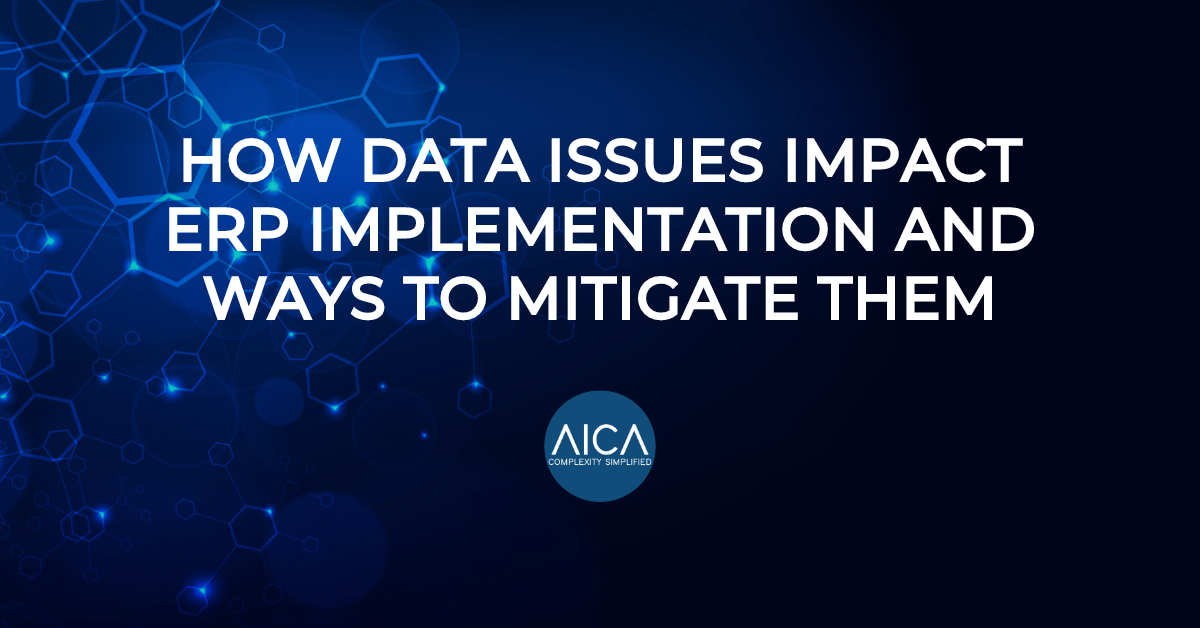ERP systems have been hailed as the single point-of-failure for many organisational woes. They promise efficiency, integration and seamless operations.
However, there’s a silent culprit that can derail even the most meticulously planned ERP implementation: data issues.
Here’s how data problems can drastically affect ERP systems and what businesses can do to prevent these pitfalls.
The Domino Effect of Data Issues in ERP Implementation
– Integration Failures: ERP systems often need to integrate with third-party vendors, such as shipping or payment partners. When there’s a mismatch between data parameters – like different naming conventions for shipping methods – it can lead to integration errors, slowing down the entire implementation process.
– Performance Hiccups: Unclean data can strain your ERP system’s resources. For example, if a batch processing job encounters errors due to flawed data, it might keep trying repeatedly, consuming valuable system resources and slowing down other processes.
– Customer Dissatisfaction: Mistakes in customer data can lead to bad user experiences, such as duplicate records, incorrect inventory displays, or even wrong deliveries. Such negative experiences can not only alienate existing customers but also deter potential ones through negative reviews.
– System Corruption: Invalid or erroneous data can corrupt your ERP system, making some functionalities erratic. Misclassification of products or services can lead to incorrect pricing, billing, or delivery processes.
– Decision-making Disruptions: Perhaps the most insidious impact is the propagation of bad data leading to flawed business decisions. If users trust incorrect data, they might make purchases, investments, or strategic decisions based on inaccurate information, leading to financial losses or strategic missteps.
Steps Businesses Can Take to Mitigate Data Issues
1. Involve Non-IT Stakeholders
Data cleaning isn’t solely an IT job. Often, domain experts from specific departments, called data owners, can provide insights on which records are accurate or which classifications make sense.
2. Eliminate Duplicates
Before migrating data to the new ERP, identify and remove duplicate entries, whether they’re exact matches or functional equivalents.
3. Adopt a Data-first Mindset
Understand that not all legacy data needs to migrate. Filter out outdated, irrelevant, or junk data to ensure that only quality data is transferred.
4. Resource Allocation
Invest in resources not just for data migration but for continuous data quality assurance. This includes developers, data owners and SaaS specialised in data cleansing.
5. Stay Compliant
Different industries have regulatory standards for data. Ensure that your data cleaning and migration processes are compliant with industry-specific regulations.
6. Develop Taxonomies and Attributes
Classify your data using taxonomies that support your business objectives. Proper classification ensures easy search, retrieval, and reporting functions.
7. Reengineer Processes
Redesign business processes to promote data accuracy. Training employees on these new processes is crucial.
8. Test Rigorously
Before final migration, test the data in environments that mimic the new ERP system to identify any inconsistencies or errors.
9. Leverage Data for Decision-making
Once your data is in the new ERP, establish processes to analyse and draw insights from it. This not only ensures data cleanliness but also promotes data-driven decision-making.
Conclusion
Ignoring data issues during ERP implementation can have cascading effects, from technical glitches to strategic blunders. By acknowledging the importance of clean, accurate data and taking proactive steps to ensure its quality, your business can reap the full benefits of their ERP system without the accompanying headaches.
Contact AICA today!

